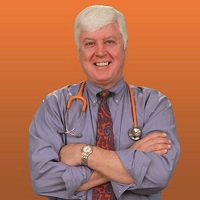 By Dr. Gary Bevill, SAMA Healthcare Services and William Taunton, Patient, SAMA Healthcare Services
By Dr. Gary Bevill, SAMA Healthcare Services and William Taunton, Patient, SAMA Healthcare Services
Initially a four-doctor practice, SAMA Healthcare Services is breaking ground in coordinated, patient-centered health care in rural El Dorado, Arkansas. Although SAMA doctors had known early on that this is how they wanted to practice medicine, they could do only so much until they got support from the Comprehensive Primary Care (CPC) initiative of the Center for Medicare & Medicaid Innovation, an Affordable Care Act program. Dr. Gary Bevill and SAMA patient William Taunton recently talked about the initiative.
Dr. Bevill: When I finished my residency in 1985, everybody in Southern Arkansas worked solo. But several of us in town felt there had to be a better way—we knew we needed more support if we were to realize our vision. We were energized by a CPC webinar that showed us how we could become more patient-centered. After the webinar, our administrator Pete Atkinson drew up the model for us on a pizza box top as we brainstormed about how we could afford to reconfigure our practice.
We received $400,000 the first year from multiple payers, including the Innovation Center, to help cover the $500,000 cost to launch, and maintain, the CPC initiative in our clinic; the funds were calculated on a monthly per-beneficiary basis. The CPC funds helped us hire staff to support the patient-centered medical home model and improve continuity of care for our patients.
We were able to hire another doctor and nurse-practitioner and established five teams, with patients assigned to each team. Each team has a doctor, a nurse-practitioner, three additional nurses and a care coordinator. One of SAMA’s nurse-practitioners is a diabetes specialist and another is a pediatrics specialist.
Each team wears scrubs with their color. Mine is orange and my tie is orange. Each exam room is tagged with a team color.
Patients complained previously that they couldn’t see their doctor. But now they can see someone on their team who knows them personally.
When patients call the clinic, they get a warm body, not an automated response. Patients learn that the easiest way to get through to medical care is to contact a team member who knows them.
Pediatric wellness visits are a challenge—they’re not predictable—so we’ve created an all-day clinic where parents can bring their children if their primary care physician isn’t available.
We were early adapters of electronic health records. It was worth that money to spend on EHRs for better tracking of our patients’ health. With care coordination and EHRs, it’s really easy to see what care patients are due for.
William Taunton: I’m 77 years old, and live about 20 miles north of El Dorado. I don’t know a lot about coordinated care, but I like the attention they give you when you walk in the door. They are very professional. They make me feel I’m a member of the orange team.
A nurse helps with making my appointments with specialists. I can check out my electronic health records, but I don’t. When the time comes for my blood work to be done, they’ll let me know.
Dr. Bevill: With our use of EHRs and attention to preventive services, we’re finding cancers and other diseases at earlier, more treatable stages. The percent of our patients with diabetes considered poorly controlled dropped from 19 percent in 2014 to 13 percent in 2015 so far; the national average is 30 percent. Breast cancer and colorectal cancer screening is significantly higher than the Arkansas and national averages.
We also were able to reduce ER visits by 461 fewer trips per 1,000 patients in 2014, saving more than $900,000.
It’s all about the patients. We start with the patient in the center of their care and we keep the patient there.
And you know what: We love going to work. We get to be doctors, not clerks. We found a way to let our staff help us. We’re a team.
This article was originally published on U.S. Department of Health & Human Services Blog and is republished here with permission.
